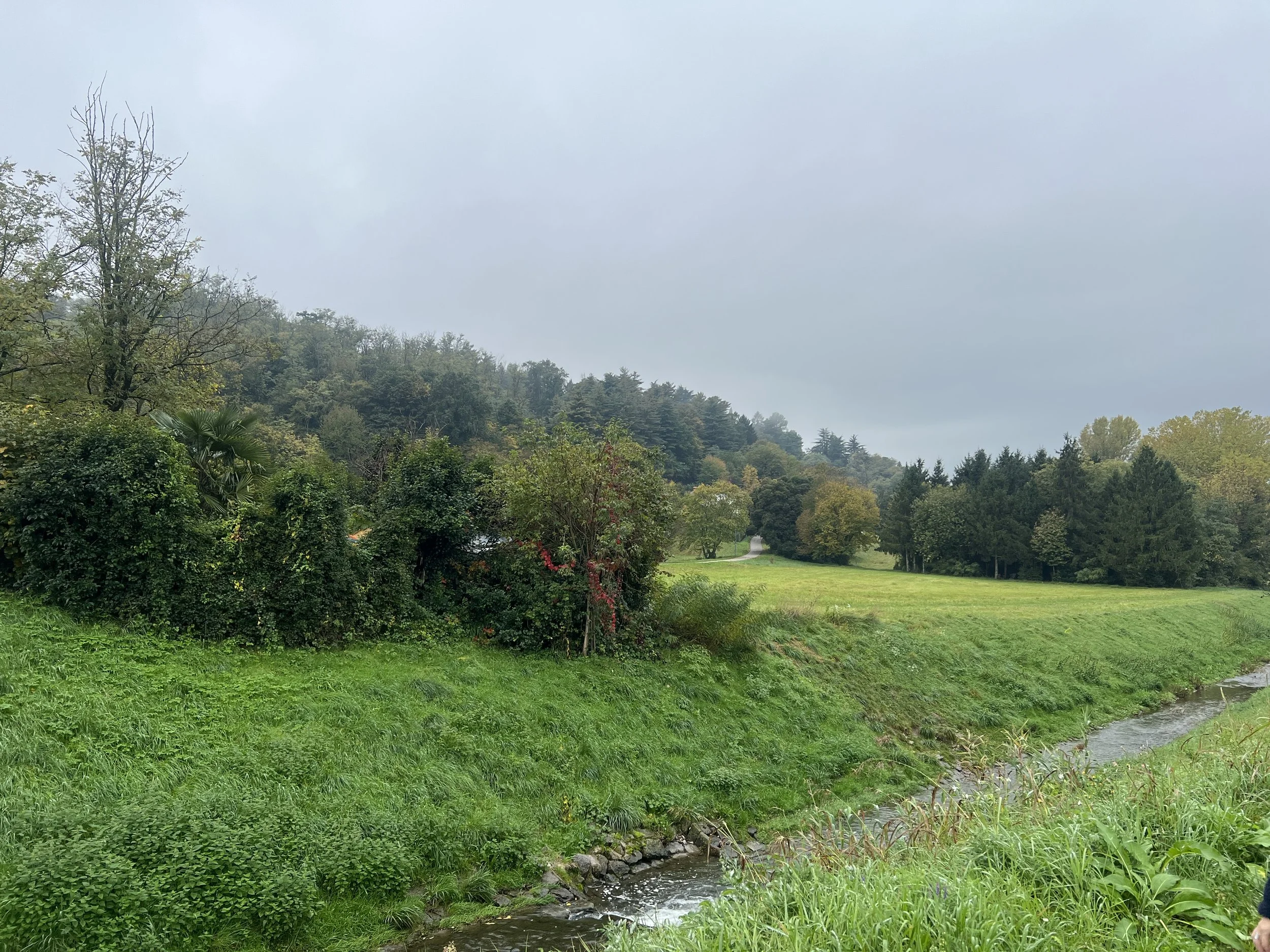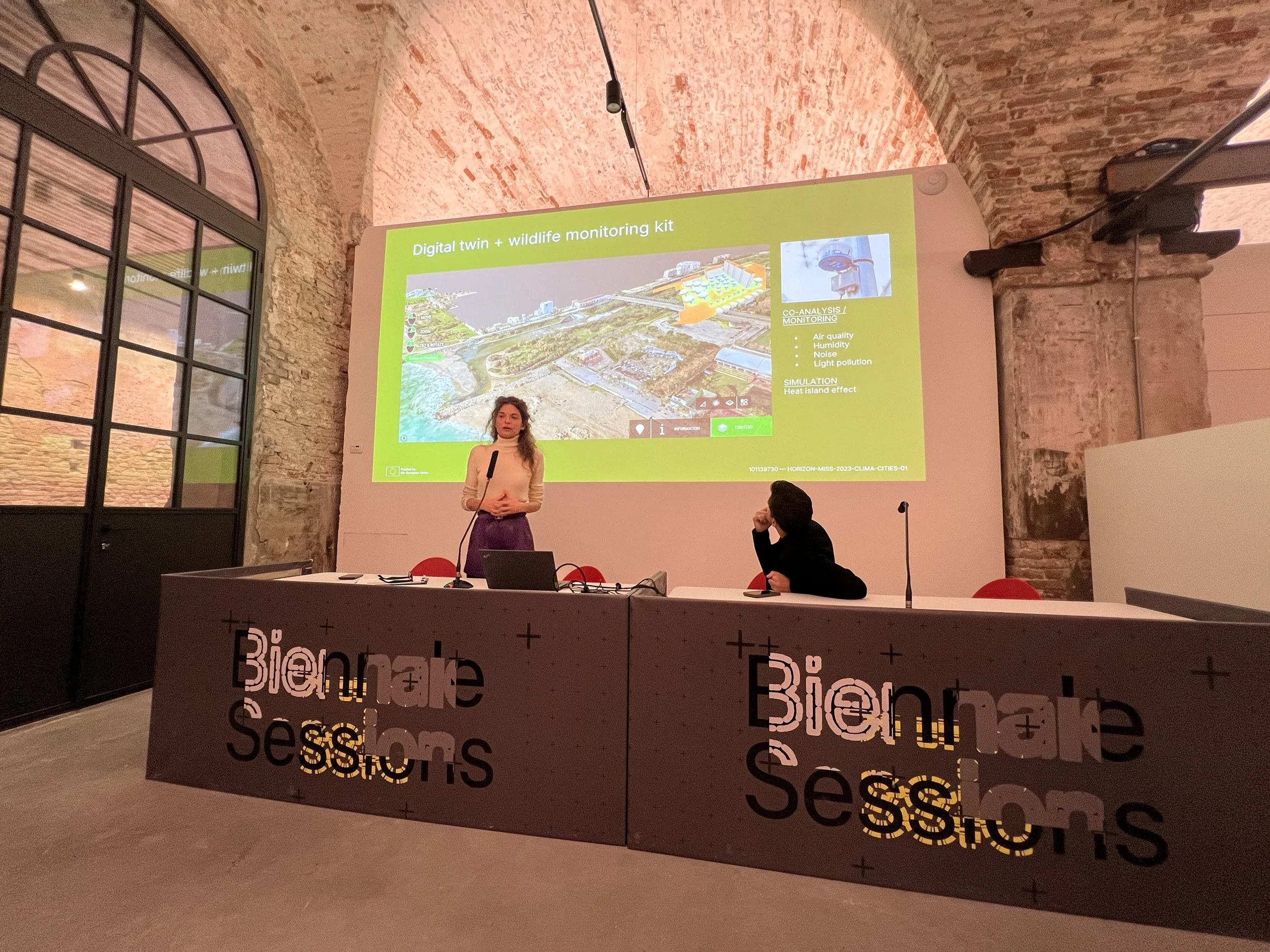Nature Has No Borders: GreenInCities Meets in Nova Gorica
Last October, the GreenInCities consortium gathered in Nova Gorica, a symbolic meeting point between Slovenia and Italy, for three days of collaboration, learning, and reflection on the progress achieved across Europe’s pilot cities.
Reconnecting a Territory Through Nature
The meeting began with a warm welcome from the University of Nova Gorica (UNG), whose journey from follower city in previous projects such as URBINAT to leader in GreenInCities illustrates how cities evolve through shared knowledge. Together with its twin city Gorizia, Nova Gorica is transforming a once-divided territory into a shared landscape of connection.
One of the highlights was the visit to Kolodvorska Street, where the “Basket in the Jungle” intervention is taking shape. This multifunctional site merges sport, ecology, and community: a semi-underground basketball court that doubles as a stormwater retention basin. The intervention will be enriched with Mediterranean vegetation, edible gardens, and shelters for wildlife, creating a living landscape fully aligned with GreenInCities’ vision of urban regeneration and its inclusive, non-human-centred approach. Funded in part by basketball icons Gigi Datome and Goran Dragić, the project embodies cross-border unity through play and nature.
Together with URBANA — a design and research collective and GreenInCities partner, leading the project’s work on ethics, inclusivity, and safety in public spaces, and and members of the postgraduate study program in Cultural Heritage Studies of UNG also led an Experimental Mapping Workshop, inviting older women and
people with reduced mobility to walk and map the future intervention areas. By exploring the city through their lived experiences, participants highlighted accessibility, safety, and comfort, proving once again that inclusive design begins with listening.
From the North to the South: Pilots in Motion
During the plenary session, Leader Cities shared their progress and lessons learned. Each pilot showcased a unique path towards re-naturing urban spaces while ensuring inclusivity and ecological resilience.
Nova Gorica’s project interventions are more than green infrastructure; they are acts of reconnection. The restoration of the Koren stream and the creation of a new swamp extension will not only mitigate floods but also create habitats for amphibians and dragonflies, improving microclimates and fostering biodiversity. The city’s emblematic fire salamander stands as a symbol of coexistence between human and non-human life.
Helsinki is reconnecting fragmented green corridors to protect the Siberian flying squirrel, a rare species dependent on continuous forest canopies. Through micro-forests, trembling aspens, and emotional mapping walks, citizens are co-designing spaces where wildlife and people coexist.
Athens is developing a humane, ecological approach to managing its stray cat population. The pilot introduces shelters, feeding stations, and green shaded areas, combining animal welfare with improved urban hygiene and community involvement.
Prato is creating wild meadows, community gardens, and a micro-forest to support the solitary Andrena bee, a vital pollinator for local ecosystems. These actions complement Prato’s broader circular city strategy, linking green infrastructure with citizen stewardship.
Barcelona focuses on water-sensitive design at the Besòs River mouth. Planned interventions, including bioswales, insect hotels, and native tree planting, aim to restore biodiversity particularly the bird population, reduce heat-island effects, and enhance the wellbeing of residents and wildlife alike









Learning and Sharing: Follower Cities Take the Stage
The second day focused on knowledge transfer between Leader and Follower Cities. The Barcelona pilot served as a case study to illustrate how digital tools, such as Smart Citizen Kits and Digital Twins, can integrate biodiversity data and non-human perspectives into planning.
In workshops held at Nova Gorica City Hall, the Follower Cities, Birštonas, Hersonissos, Reykjavík, Cork, Pécs, and Matosinhos, shared their local challenges and strategies, from community engagement to invasive species management. Across all sessions, participants identified long-term local commitment and intergenerational collaboration as key to sustaining Nature-based interventions.
From Food to Floods: Living Labs in Action
The final day took the consortium to the Koren Stream pilot and the Greengo Community Kitchen; a solar-powered mobile kitchen blending ecology, technology, and gastronomy developed by Center of Green Technologies with the support of UNG. Operated by the Floravita Institute, the kitchen uses locally foraged plants to create climate-resilient recipes and hosts workshops on sustainable food practices.
Nearby, partners explored the ongoing floodplain restoration works, which include plans for new wetlands, tree planting, and community orchards. Interventions that merge environmental regeneration with social use of space. Among the upcoming features of the site is a Water Theatre, a blue–green public space designed to combine water management with cultural and leisure activities, reinforcing Nova Gorica’s vision of living harmoniously with nature.
Venice Biennale: Desired and Unwanted Non-Humans in Urban Environments
After the consortium meeting, GreenInCities partners joined the Biennale Sessions Programme at the Venice Architecture Biennale, with a panel titled “Desired and Unwanted Non-Humans in Urban Environments.”
The session, introduced by Marco Acri (UNG), explored Venice as a living ecosystem shaped by both humans and microorganisms. Through talks and interactive activities, researchers and designers reflected on how cities can design with, rather than against, other forms of life.
Contributions from partners, including Chiara Farinea (IAAC), Andrea Conserva (IAAC), Viktor Bukovszki (ABUD), Niall Buckley (IES), and Eva Grigoriadou and Evelina Efaliagka from URBANA, showcased how GreenInCities tools such as Ecosyntax, physics-based modelling, and co-caring strategies translate data and ethics into tangible design for multi-species coexistence.
Towards Greener, Fairer, More Connected Cities
The Nova Gorica meeting was more than a milestone; it was a reaffirmation of GreenInCities’ mission: to reconnect people, species, and territories through design that is inclusive, evidence-based, and rooted in care. As the project moves towards implementation, the collaboration between Leader and Follower Cities continues to prove that nature truly has no borders.
After three days filled with workshops, walks, shared meals, and inspiring discussions on how to reimagine urban nature for all, the consortium bid farewell to Nova Gorica and Gorizia with heartfelt thanks to the University of Nova Gorica and the Municipality of Nova Gorica for their exceptional organisation and warm cross-border hospitality — hvala lepa!







